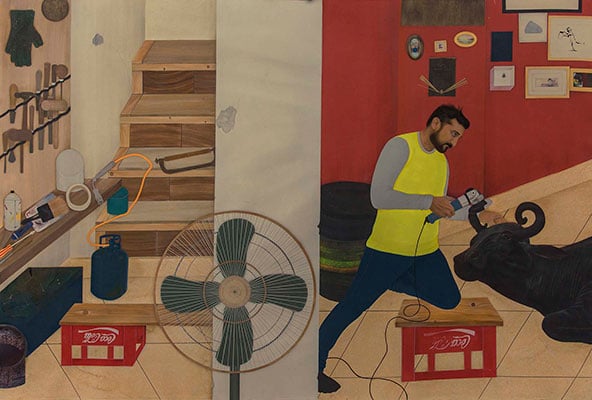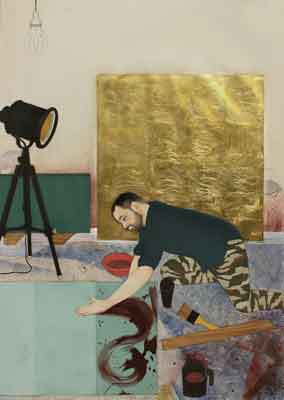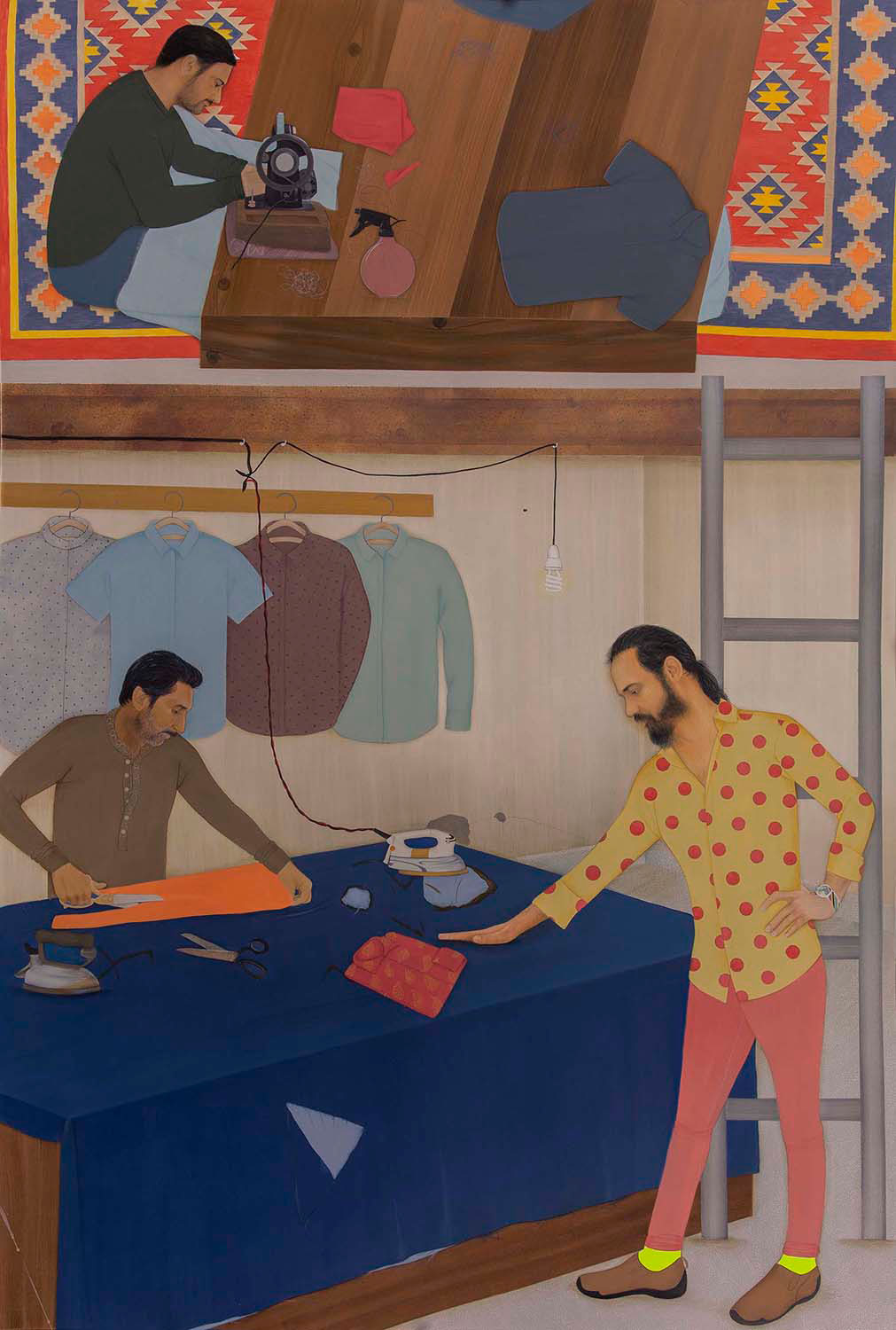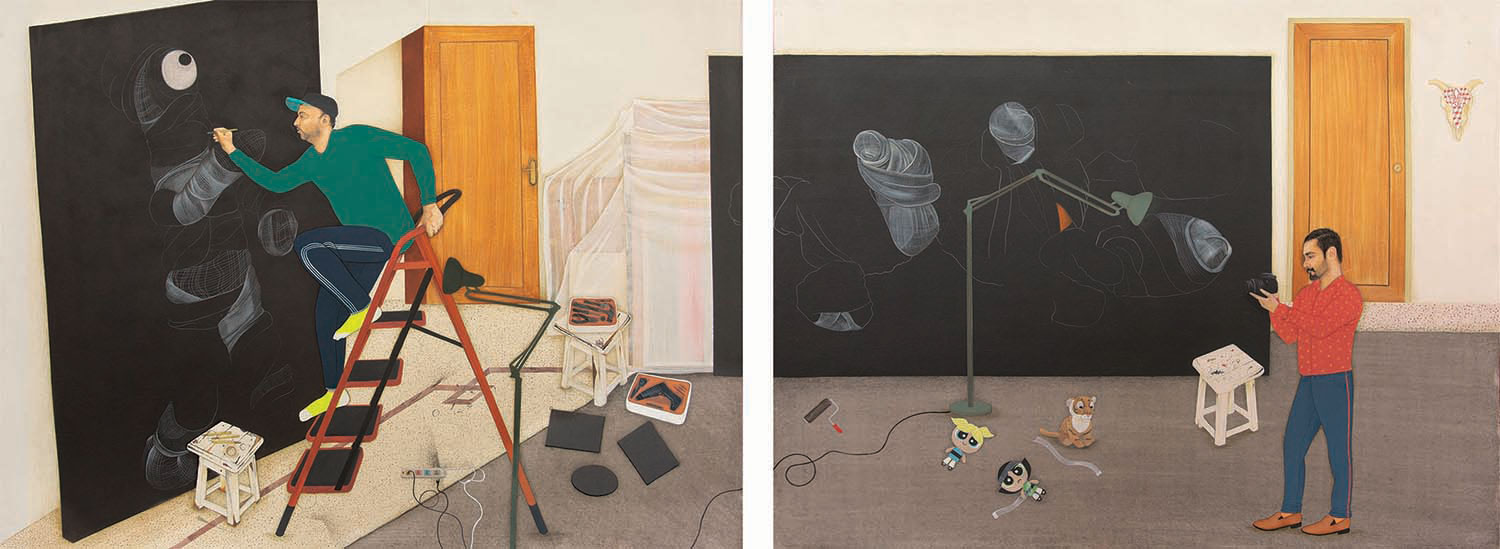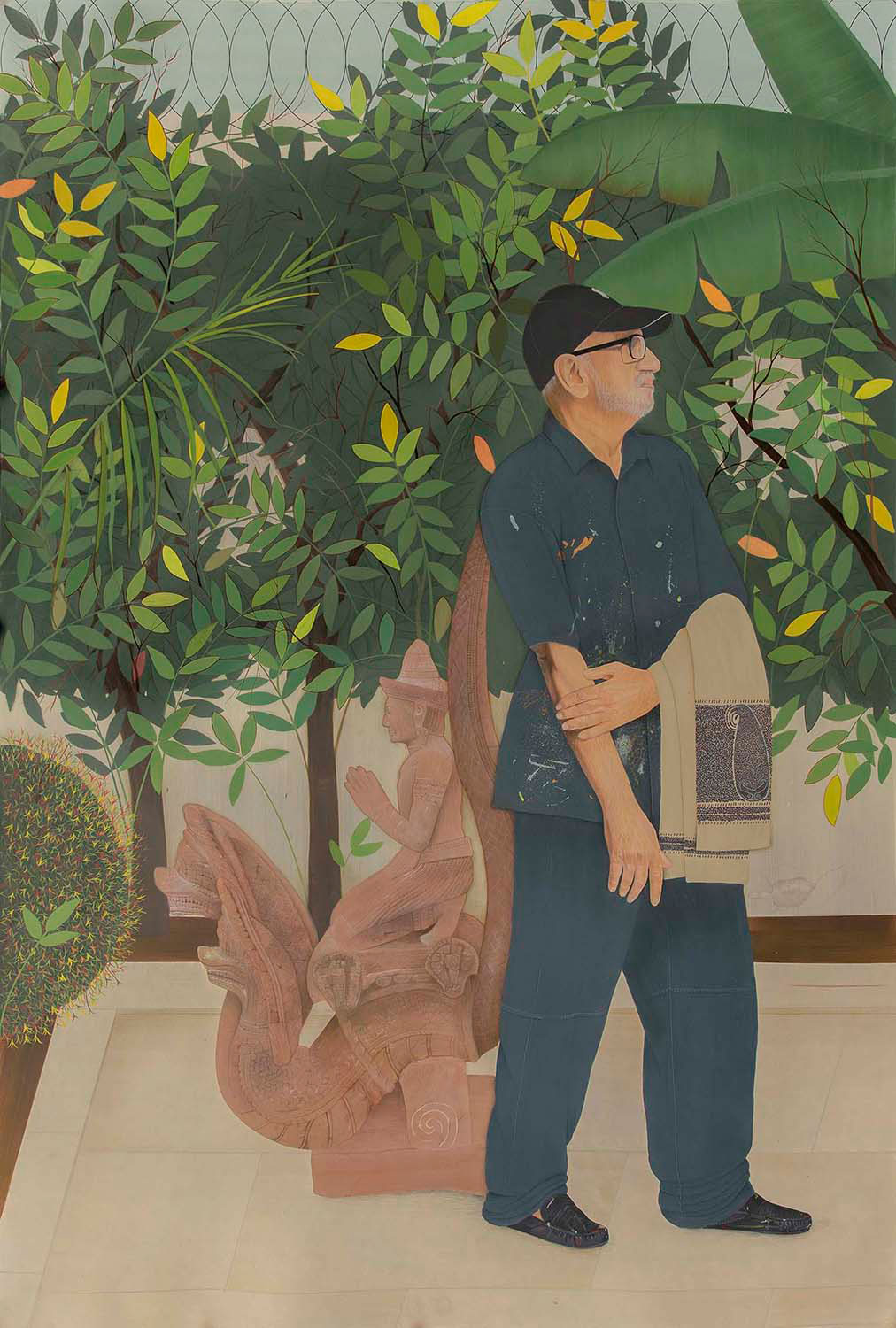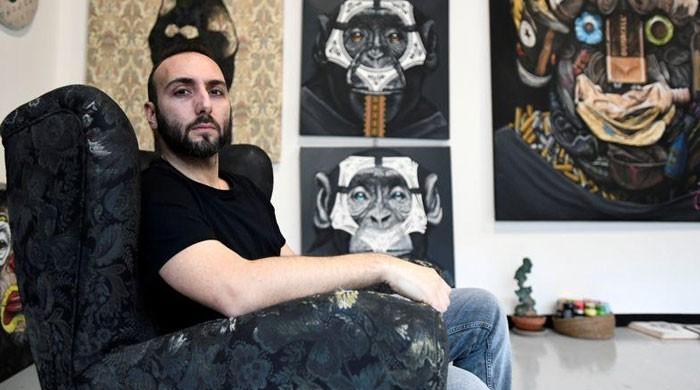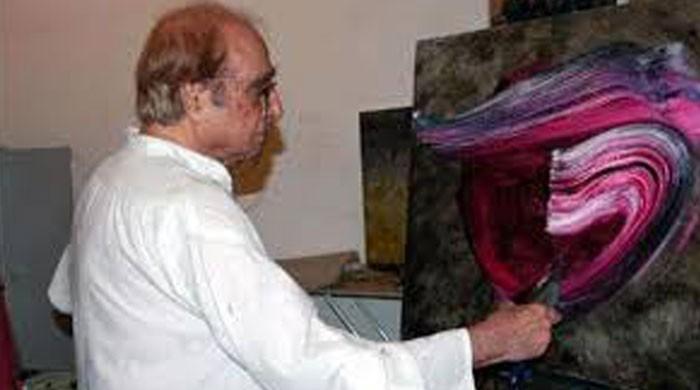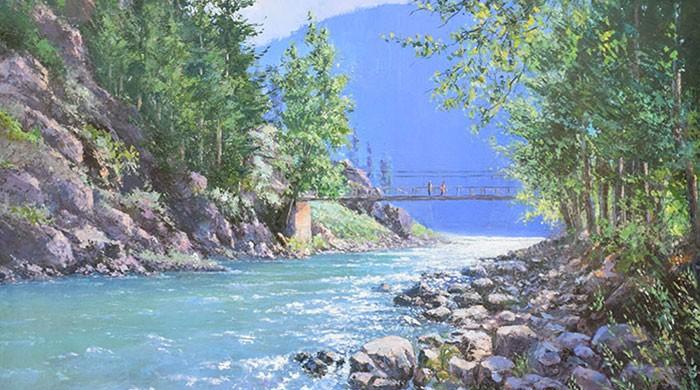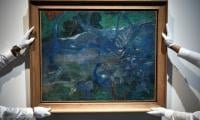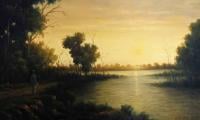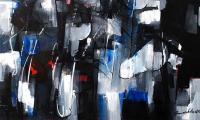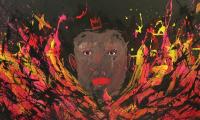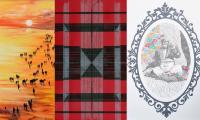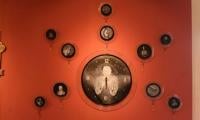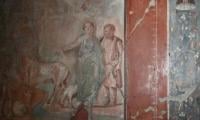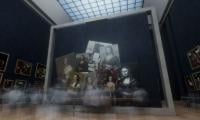Karachinama: Up, close and personal
Ahmed Javed’s artwork titled ‘Imran Qureshi Studio’ in gouache has been unanimously proclaimed as the winner of The 2019 Sovereign Asian Art Prize in Hong Kong.
Ahmed Javed’s artwork titled ‘Imran Qureshi Studio’ in gouache has been unanimously proclaimed as the winner of The 2019 Sovereign Asian Art Prize in Hong Kong. The jurors gave Imran Qureshi’s Studio by Ahmed Javed the highest score in the history of the prize. He worked in the neo-miniature style on a large scale that was taught at his alma mater, the National College of Arts in Lahore.
In this art piece, Ahmed Javed revealed a moment of creation in Imran Qureshi’s studio, and brought forth powerful context of his former teacher’s work. He has first hand experience of Imran Qureshi’s work as he witnessed him creating his artworks while assisting him for quite some time.
Imran Qureshi was shown making the gestural, blood-red hand paintings that shattered the atmosphere, scale and hierarchical methods of the traditional Mughal miniature to depict horror and terror in the present. In this work, Ahmed Javed records and frames amplifies and pays homage to this moment.
In recent exhibition at Sanat Gallery, Karachi titled Karachinama - Behind the Scenes in an Artist’s Studio & More, Ahmed Javed presents six paintings. This show, curated by Adeel uz Zafar, is an extension of Lahorenama exhibited at Sanat Initiative last year in August.
While elaborating his work Ahmed said, “My work revolves around questioning and at times contesting the ‘modernization’ of miniature painting while focusing on working with the traditional style of miniature art. Traditional miniature has always captured my attention, hence as a way forward to find my subject I went back to move forward, through contemporary life documentation. My journey led me towards documenting contemporary artists, in their studios and beyond their workspace; in an up-close and personal way.”
The artworks depicted some of the important personalities in the contemporary art world initially of the Lahore and now Karachi art scene. The exhibition let art lovers know much better about their favorite artists by portraying what they are like, their artistic process, where they work and more.
Ahmed has documented the creative process of these contemporary artists in an up, close and personal way, while they pursue daily practice in their studios or workspace which serves as a creative center for experimentation, a space in which they are free to pursue their own imagery and artistic agenda.
The artists featured in Karachinama is based on two criteria: one is about being a Karachiite and the other is about connecting with the artist on a personal level in order to be allowed to step into their territories without any insecurity. Therefore, after contacting many artists, a few were selected who met the criteria.
Explaining the continuation of the previous series with the current exhibition he said, “In continuation to my previous show Lahorenama this series is about building a narrative based on the life of artists, in future shaping a manuscript. These scriptures in past envisioned the glorified life of rulers. In my work I intend to present the life of contemporary artists. These works also particularize the transformation from the discourse of workshops and apprenticeships of the past era, into a complete paradox of an independent artist’s studio in which he is free to pursue his own imagery and artistic agenda.”
Talking about his technique he said, “In this body of work I seek to document through stylization, technique and multiple perspectives based on the actual environments and people around me. The colour schemes have been inspired from the old Mughal miniatures. I have played around with the size and perspective of certain areas, objects and figures to denote their elevated status or importance much like traditional Mughal miniatures. My work seeks to preserve the traditional practice while acknowledging its existence in present context.”
-
Rare Gauguin fetches 9.5 mn euros at Paris auction
-
Vibrant compositions
-
Artist Mashkoor Raza's bold and soft compositions
-
Sanki King brings a burst of energy in graffiti
-
Remembering the forgotten
-
‘Being Edhi’ – means to serve humanity
-
New technique reveals lost splendours of Herculaneum art
-
Louvre offers virtual ´tete-a-tete´ with the Mona Lisa
